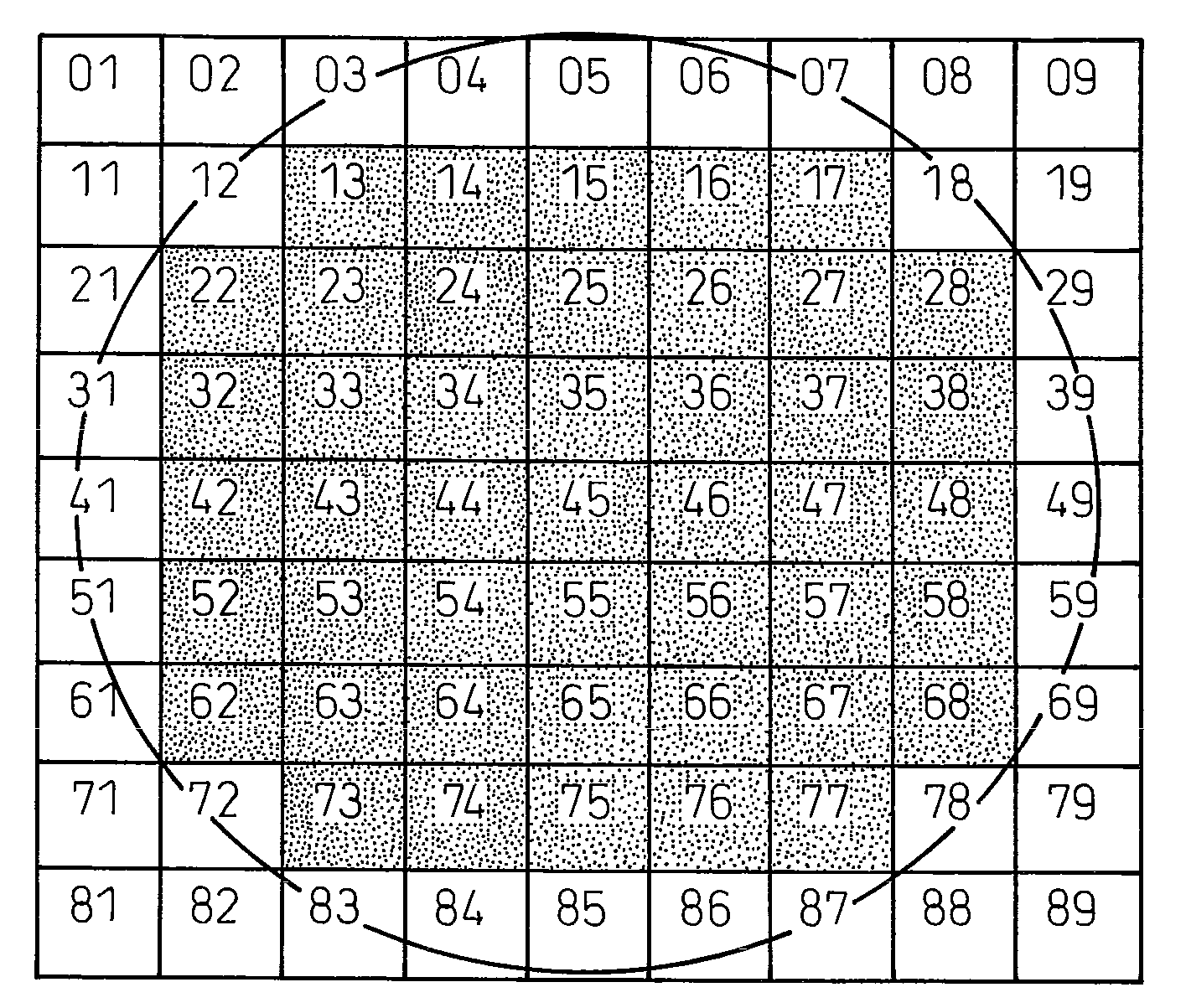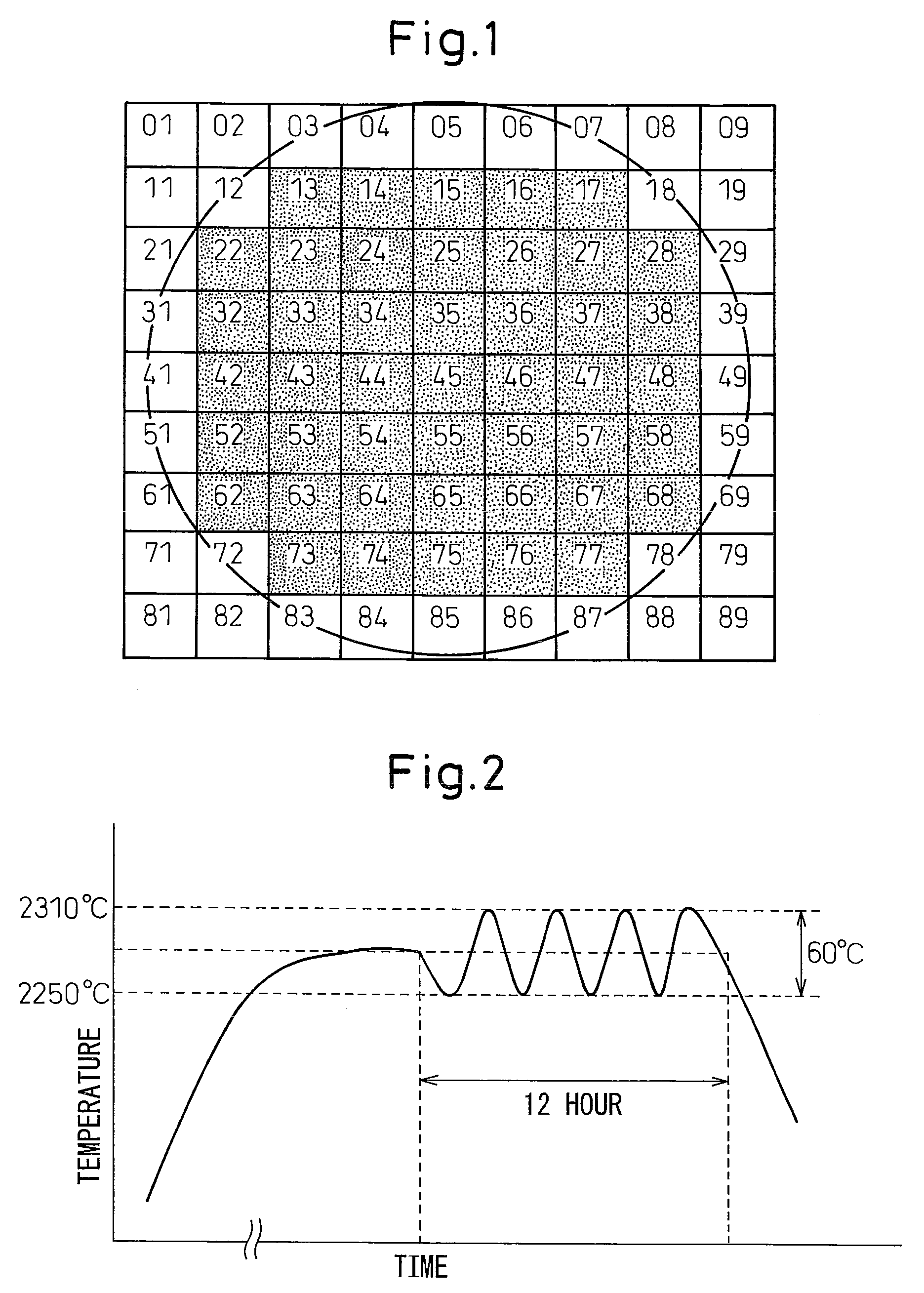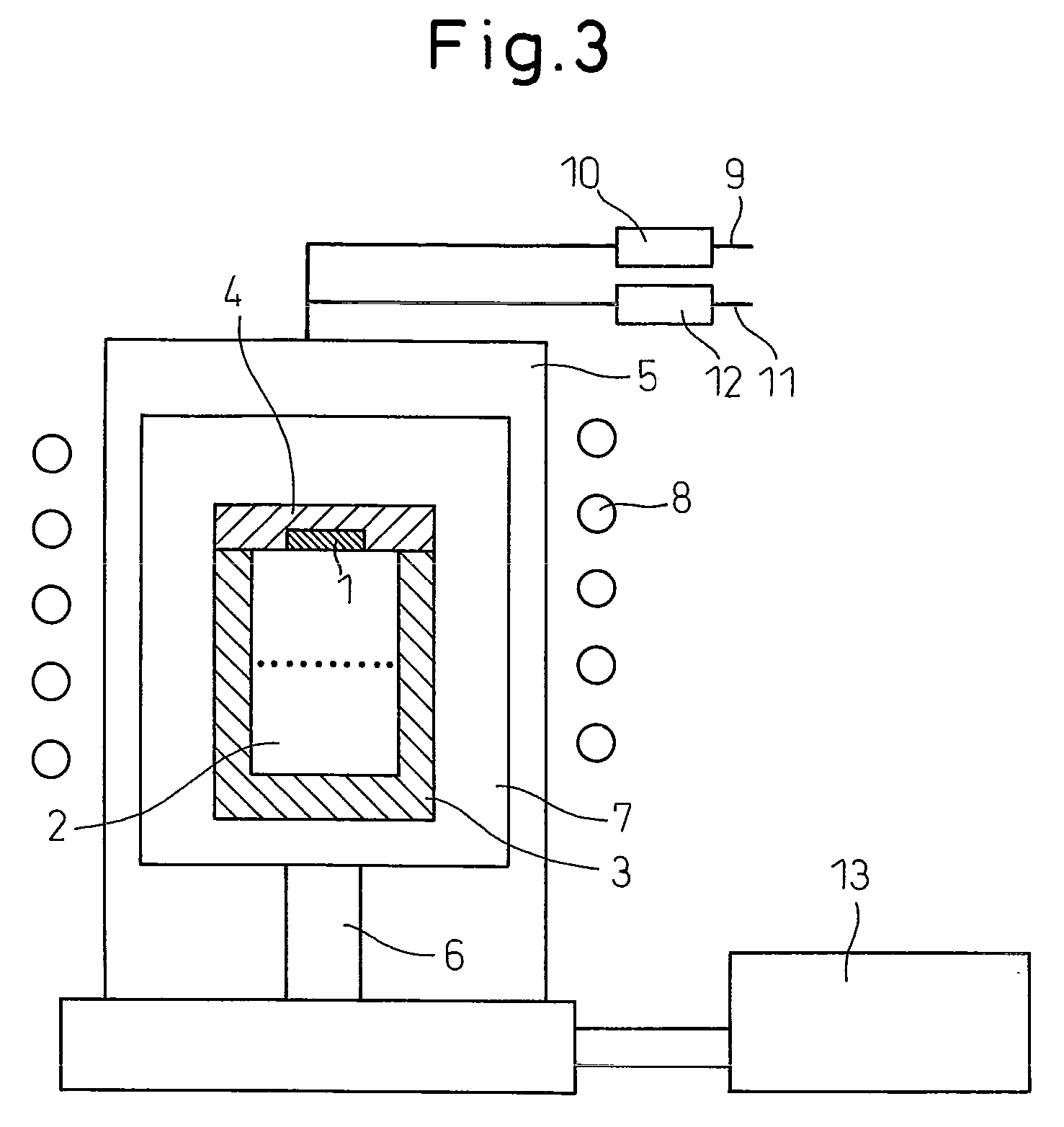Sic single-crystal substrate and method of producing sic single-crystal substrate
a single crystal substrate and crystal technology, applied in the direction of crystal growth process, polycrystalline material growth, chemistry apparatus and processes, etc., can solve the problems of substrate defects, device property stability and yield would still be inadequate for achieving wide utilization, and achieve stable electrical properties and high yield
- Summary
- Abstract
- Description
- Claims
- Application Information
AI Technical Summary
Benefits of technology
Problems solved by technology
Method used
Image
Examples
example 1
[0048]A single crystal production apparatus for producing the invention single crystal, such as shown in FIG. 3, was used to produce single crystal. A 52 mm diameter 4H SiC single-crystal substrate having a {0001} surface was prepared as seed crystal. A seed crystal was cut from the crystal, which had a total dislocation density of about 12,000 / cm2, and then machined. Next, the seed crystal 1 was attached to the inner surface of the graphite crucible lid 4 of a graphite crucible 3. Powdery SiC crystal raw material 2 was charged into the graphite crucible 3 after cleansing.
[0049]Next, the graphite crucible 3 charged with the raw material was closed with the graphite crucible lid 4, wrapped in graphite felt 7, and placed on a graphite pedestal 6 inside a dual-wall quartz sheath 5. The interior of the quartz sheath was evacuated with a vacuum pumping unit 13 and then supplied with an atmosphere gas composed of a mixed gas of high-purity Ar gas mixed with about 7% nitrogen gas obtained ...
example 2
[0052]Crystal growth was conducted similarly to in Example 1 using a large diameter crucible and a substrate of 70-mm diameter size as a seed crystal. The total dislocation density of the seed crystal was about 10,000 / cm2. Between the fifth to tenth hour of crystal growth, thermal cycling treatment consisting of 5 temperature cycles within a 60° C. range was conducted similarly to in Example 1. Observation of dislocation distribution by the same method as in Example 1 revealed presence of dislocation pairs and / or dislocation rows in 32% of the regions. The average dislocation density of the regions having no dislocation pairs or dislocation rows was 5,000 / cm2. The substrate measured about 72-mm in diameter.
example 3
[0053]Crystal was produced by the same method as set out in Example 1. A substrate cut from the crystal was polished, and an approximately 10-μm thick SiC single crystal film was grown on the substrate surface in 2 hr using a commercially available CVD epitaxial growth system for SiC.
[0054]The epitaxial film was grown on a substrate whose plane orientation was inclined by 4° from . Its surface dislocation distribution was observed as set out in Example 1. Dislocation pairs and / or dislocation rows were found to be present in 10% of the regions. The average dislocation density of the regions having no dislocation pairs or dislocation rows was 4,000 / cm2. The ratio of regions with dislocation pairs and or dislocation rows was on substantially the same level as the dislocation distribution of the substrate. Although a small increase was seen in the dislocation density of portions with no dislocation rows, the level was substantially the same.
PUM
 Login to View More
Login to View More Abstract
Description
Claims
Application Information
 Login to View More
Login to View More - R&D
- Intellectual Property
- Life Sciences
- Materials
- Tech Scout
- Unparalleled Data Quality
- Higher Quality Content
- 60% Fewer Hallucinations
Browse by: Latest US Patents, China's latest patents, Technical Efficacy Thesaurus, Application Domain, Technology Topic, Popular Technical Reports.
© 2025 PatSnap. All rights reserved.Legal|Privacy policy|Modern Slavery Act Transparency Statement|Sitemap|About US| Contact US: help@patsnap.com



